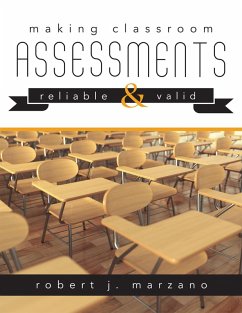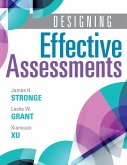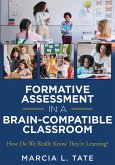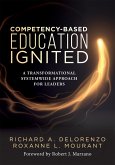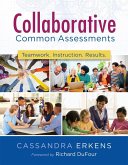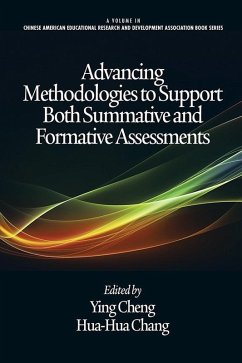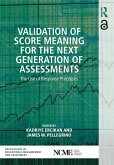Making Classroom Assessments Reliable and Valid by Robert J. Marzano will convince you that classroom assessments should become the primary method for formally measuring student learning over other types of assessment in education. Read about the key advantages of classroom assessments over interim, end-of-course, and state assessments in how to assess student learning and measure growth over time.
Marzano also addresses the validity and reliability of classroom assessments and how to improve those metrics before bringing them to their rightful place in K-12 assessments. This book outlines how to revamp validity and reliability to match technical advances made in classroom assessment, instead of matching large-scale assessment's traditional standards.
Using this book, teachers, schools, and districts can design classroom assessments that are equally if not more reliable and valid than traditional large-scale assessments. How this book will convince you to use classroom assessments:
Contents: Introduction: The Role of Classroom Assessment Chapter 1: Discussing the Classroom Assessment Paradigm for Validity Chapter 2: Designing and Scoring Parallel Assessments Chapter 3: Discussing the Classroom Assessment Paradigm for Reliability Chapter 4: Measuring Growth for Groups of Students Chapter 5: Transforming the System Using the New Classroom Assessment Paradigms Appendix
Marzano also addresses the validity and reliability of classroom assessments and how to improve those metrics before bringing them to their rightful place in K-12 assessments. This book outlines how to revamp validity and reliability to match technical advances made in classroom assessment, instead of matching large-scale assessment's traditional standards.
Using this book, teachers, schools, and districts can design classroom assessments that are equally if not more reliable and valid than traditional large-scale assessments. How this book will convince you to use classroom assessments:
- Consider the history of large-scale assessments in US education and the purpose of standardized testing.
- Inspect the importance of and future role of classroom assessment.
- Explore the three mathematical models of reliability, as well as the three major types of validity.
- Understand the principles of assessment for learning and the importance of measuring students' individual and comparative growth.
- Use the provided formulas to create classroom assessments that match traditional interim or end-of-year assessments in reliability and validity.
Contents: Introduction: The Role of Classroom Assessment Chapter 1: Discussing the Classroom Assessment Paradigm for Validity Chapter 2: Designing and Scoring Parallel Assessments Chapter 3: Discussing the Classroom Assessment Paradigm for Reliability Chapter 4: Measuring Growth for Groups of Students Chapter 5: Transforming the System Using the New Classroom Assessment Paradigms Appendix
Dieser Download kann aus rechtlichen Gründen nur mit Rechnungsadresse in A, D ausgeliefert werden.

